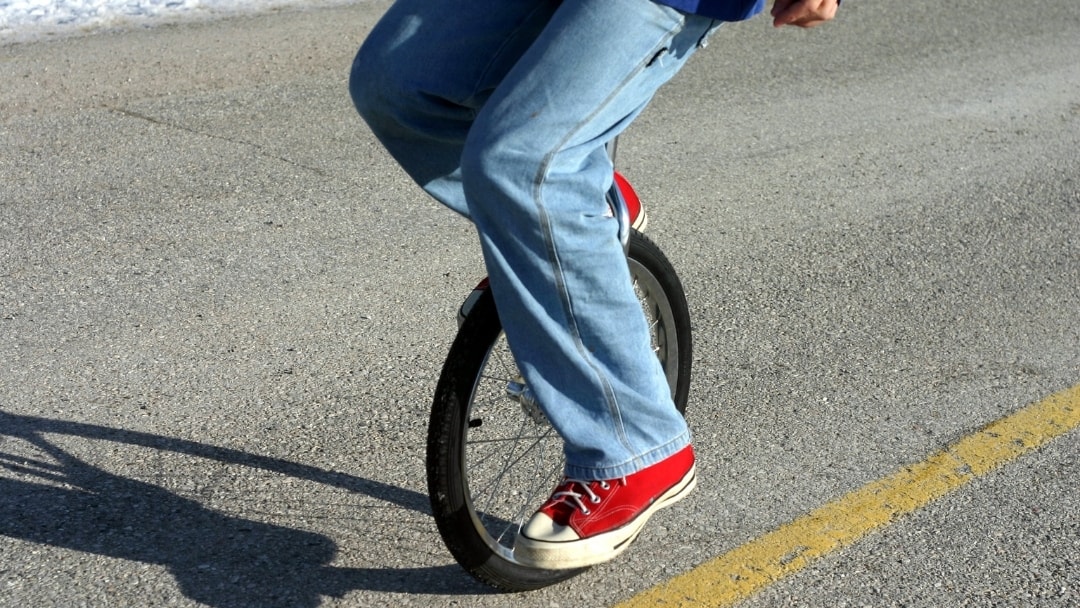In this blog post, Patricia Lemer discusses ways to balance food, time, senses and emotions for children with developmental delays interventions.
All living things strive for balance. Healthy organisms manifest balance by being flexible, never static. As day follows night, calm follows a storm and death comes after birth, nature maintains balance with constant change.
For humans, being in balance is more difficult. For those living and working with children who have developmental delays, making balance can be a huge challenge.
How do parents balance their personal needs with those of their children? How can therapists and teachers balance work and relaxation? How do we balance lesson plans and unstructured exploration? Listening with talking? Being and doing? Thinking and feeling? Giving and receiving?
An endless array of balance questions confronts us every day. Bringing these choices into consciousness may help us deal with them more effectively. Here are some ideas for balancing developmental delays interventions.
Balancing Food
Our bodies seek a balance of flavors, textures and tastes. Well aware of that fact, restaurants serve us salty food so that we crave the sweetness of dessert. Some pediatricians say that children naturally balance their food intake over time. Unfortunately, this is not always true for picky eaters on special diets. Here are some tips. Balance:
Carbohydrates, Fats and Protein
Eat a balanced diet that has complex carbohydrates (including fruits and vegetables), proteins, and good quality fats. Simple carbohydrates and fats often replace valuable proteins. Cut out empty calories, harmful processed carbohydrates and hydrogenated fats, and replace them with healthier alternatives.
Animal and Vegetable Sources
Some diets, even with the proper proportions, are unbalanced because they lack variety. Consider lamb and turkey as excellent, hypo-allergenic substitutes for chicken and beef. Use nuts and seeds liberally for spreads and desserts.
Unprocessed and Processed foods
Instead of gluten and dairy-free substitutes for highly processed wheat and dairy products such as breads and pastas, how about real rice, quinoa and raw vegetables?
Balancing the Senses
Touch, movement, pressure, sound and sight bombard the body day and night. Like it or not, they throw us out of balance. A balanced sensory diet provides nutritious, strengthening “food” for the nervous system. Brain Gym and Bal-A-Vis-X can integrate sensory processing. In addition, use energizing and calming antidotes to counteract inadequate or excessive stimulation.
Deep and Light Touch/Pressure
Deep pressure is calming, while light is alerting. Most kids need the former to help their poor regulation.
Loud and Soft
The world is a noisy place. Use integrating classical and “new age” background music for calming at home and at school.
Light and Dark
Use different lighting for different activities. Replace incandescent and fluorescent lights with full-spectrum bulbs. Pull the shades and add candles for effect.
Simple and Busy
Some bedrooms and classrooms are over-stimulating visually. Bulletin boards, mobiles and carpet squares have their place for teaching, but can be distracting for many kids. Try changing materials frequently, instead of having too much visual stimulation at once.
Balancing Time
Time is such a precious commodity, and how we use it is very personal. Some prefer to know just what is coming up and follow strict schedules. Others are more spontaneous and flexible, doing what comes up.
Those who function best balance the two, having a flexible schedule, knowing when to stick to it, and when to go with the flow. Since adults have some control of children’s time, we can build in balance of:
Structured and Unstructured Time
Balance therapy with free time. Play allows kids to use their imagination, become resourceful and practice what they have learned.
Resting and Doing
We sometimes need to stop doing and just be. Resting opens the body and mind to marvelous things. Space to balance activity with reflection is too often missing in our busy lives.
Giving and Receiving
Kids love taking various roles, such as teacher, cook, and Daddy. It gives them power over their surroundings. Many adults are unaccustomed to receiving. Let the child take care of you for a change.
Balancing Emotions
How important it is to balance the spirit. We experience joy and exhilaration more deeply when we also know grief and frustration.
Pets are a perfect catalyst for kids to learn about love, frustration, sadness and fear in a protected environment. Consider an appropriate critter for the age and developmental level of each child. Dogs, cats and other creatures hold a world of sensory experiences, as well.
Want to be in balance? Integrate body, mind and spirit on the balance board of life!
About Patricia S. Lemer LPC MEd
Patricia S. Lemer is a licensed professional counselor, holding a Masters of Education in counseling and learning disabilities from Boston College and a Masters in Business from Johns Hopkins University. She practiced as an educational diagnostician for over 40 years.
She was a co-founder and served as Executive Director of the international non-profit organization Developmental Delay Resources (DDR). After DDR merged with Epidemic Answers, she became Chairman of the Board. When she retired from the board, she became an emeritus board member.

She is the author of three books, the most recent of which is Outsmarting Autism, Updated and Expanded: Build Healthy Foundations for Communication, Socialization, and Behavior at All Ages (North Atlantic Books, 2019).
Lemer wrote over 50 editorials for "New Developments," the quarterly newsletter of Developmental Delay Resources (DDR), from 1995 - 2009. When DDR wound down, she wrote an online blog, "After the Diagnosis, Then What?" from 2009-2017. Her articles and blogs have been updated and archived on the Epidemic Answers website.
Since 2019, Patricia Lemer has recorded a bimonthly podcast, "The Autism Detective." In these hour-long shows, she interviews parents and professionals about their experiences in maximizing the potential of individuals on the autism spectrum. Over 100 episodes are available on Spotify and other online platforms. To learn more, go to PatriciaLemer.com and OutsmartingAutism.com
Still Looking for Answers?
Visit the Epidemic Answers Practitioner Directory to find a practitioner near you.
Join us inside our online membership community for parents, Healing Together, where you’ll find even more healing resources, expert guidance, and a community to support you every step of your child’s healing journey.




